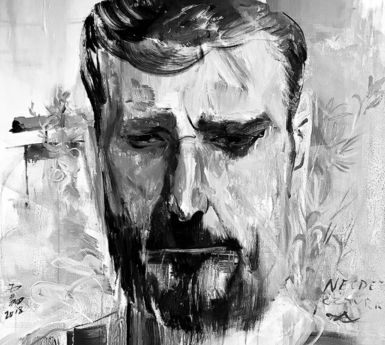 |
|
Portraits of people depicted by Wang Lei, who encounters his models randomly during his trips to cities along the Silk Road. [Photo provided to China Daily] |
Christine Cayol, founder of Yishu 8, describes Wang as a "nomadic painter searching for his own culture," who uses travel as a way to rediscover his own roots.
"To paint the faces, and capture the atmosphere and an impression of certain moments along the Silk Road, as opposed to the Silk Road itself, are true realities," she explains. "It's a kind of going back to the geographic, climatic and human origins of Chinese culture."
It is not a new, nor a Chinese, tradition. Western painters have a long tradition of traveling to experience the world in order to broaden their horizons and improve their perceptions of the world. Artists in the 19th century went to Africa and the Middle East to find fresh subjects for their work. In the 1970s, Italian artists such as Francesco Clemente also embarked on journeys of discovery to countries like Afghanistan and Pakistan in search of the exotic, and inspiration from elements different to their own culture, explains Huang Du, an art critic.
Wang is one of the few Chinese artists to go and find inspiration from other Asian countries, "like a kind of visual archaeology," he adds.
"For a long time, Chinese artists have focused on Western culture," Huang elaborates. "However, Asian culture's enrichment, and its geographical proximity, means that they deserve more attention now, because of the Silk Road strategy."
Wang, the Beijing-based artist, says he became obsessed with his trips to Asian countries.
He often stayed for months in one country and talked as much as he could to locals and almost everyone he encountered on his trips. What Wang seeks, it seems, is to live like a local.
"The more I travel, the more questions I have about my own origin," he says.